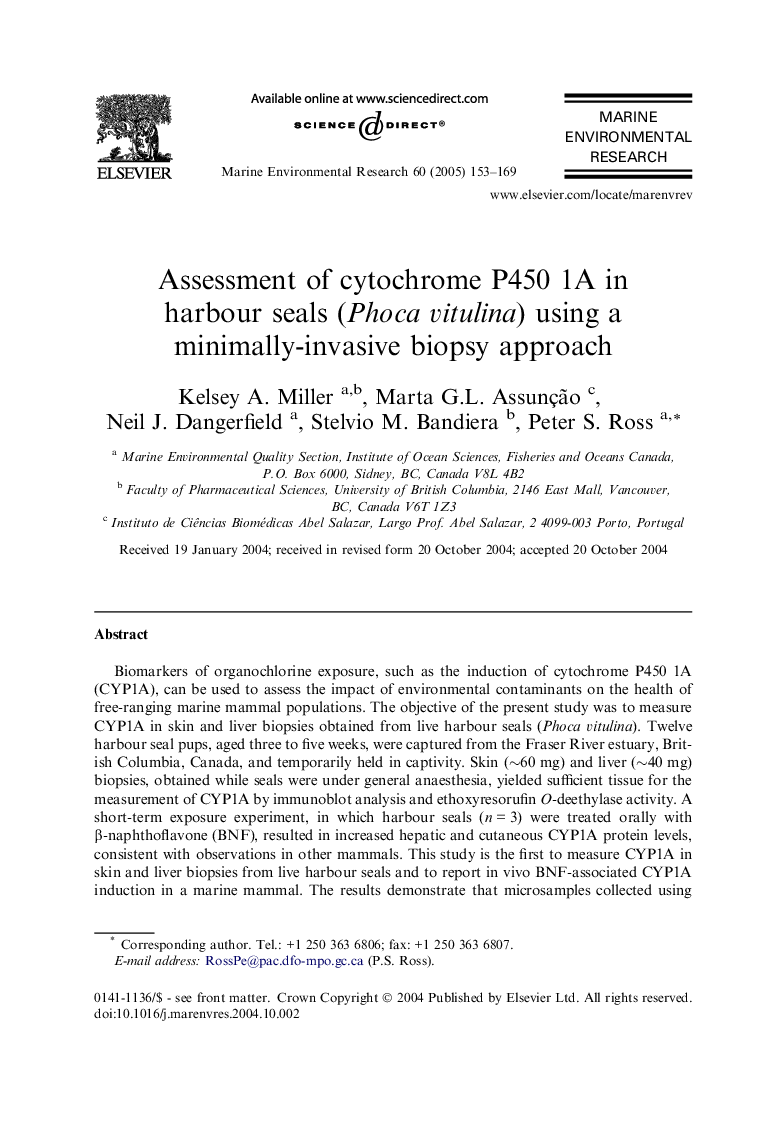| Article ID | Journal | Published Year | Pages | File Type |
|---|---|---|---|---|
| 9484399 | Marine Environmental Research | 2005 | 17 Pages |
Abstract
Biomarkers of organochlorine exposure, such as the induction of cytochrome P450 1A (CYP1A), can be used to assess the impact of environmental contaminants on the health of free-ranging marine mammal populations. The objective of the present study was to measure CYP1A in skin and liver biopsies obtained from live harbour seals (Phoca vitulina). Twelve harbour seal pups, aged three to five weeks, were captured from the Fraser River estuary, British Columbia, Canada, and temporarily held in captivity. Skin (â¼60 mg) and liver (â¼40 mg) biopsies, obtained while seals were under general anaesthesia, yielded sufficient tissue for the measurement of CYP1A by immunoblot analysis and ethoxyresorufin O-deethylase activity. A short-term exposure experiment, in which harbour seals (n = 3) were treated orally with β-naphthoflavone (BNF), resulted in increased hepatic and cutaneous CYP1A protein levels, consistent with observations in other mammals. This study is the first to measure CYP1A in skin and liver biopsies from live harbour seals and to report in vivo BNF-associated CYP1A induction in a marine mammal. The results demonstrate that microsamples collected using minimally-invasive techniques can provide toxicologically-relevant information form marine mammals.
Related Topics
Physical Sciences and Engineering
Earth and Planetary Sciences
Oceanography
Authors
Kelsey A. Miller, Marta G.L. Assunção, Neil J. Dangerfield, Stelvio M. Bandiera, Peter S. Ross,
